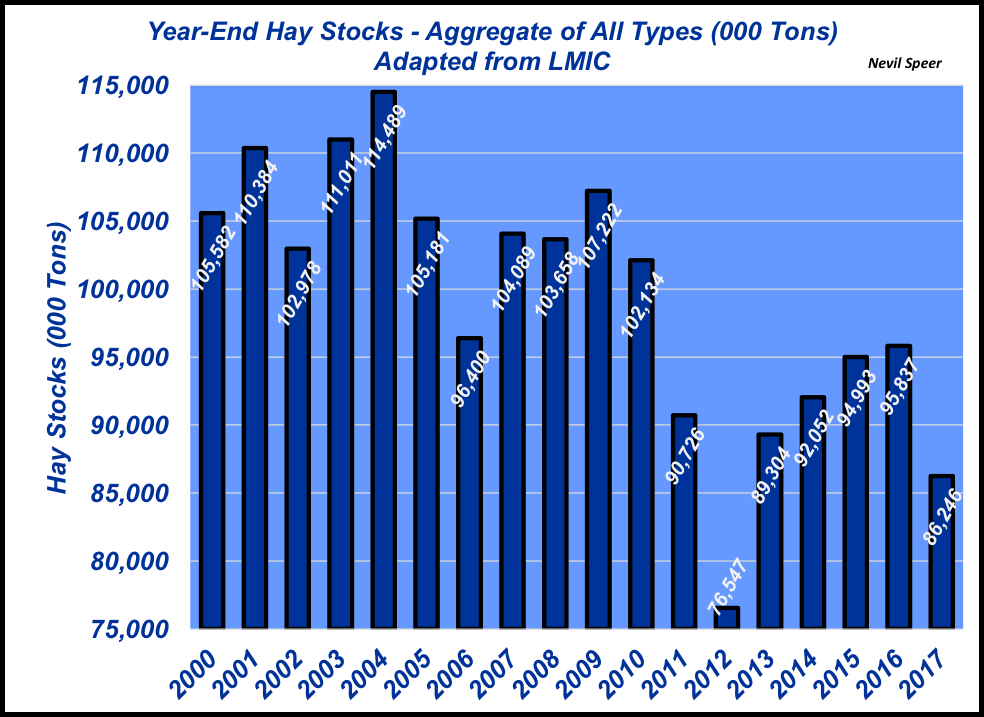The current drought monitor reveals that much of the country is experiencing some level of stress – ranging from being categorized as abnormally dry (at the minimum) up through the drought category. That has important implications heading into spring.
Ranking toward the top of concerns revolves around hay inventories and/or availability. This week’s illustration highlights year-over-year changes in total hay inventories across the U.S. Clearly, drought conditions have advanced the need to feed hay and have impacted 2017’s year-end stocks – off nearly 10 million tons versus last year.
Continued dry conditions will further impact this situation: One, it could mean a longer feeding season as grass is slow to appear this spring; two, 2018 hay production could be impacted by irrigation limits and/or subsoil moisture shortages.

How are your hay inventories holding up? What do your local hay supplies and prices look like? What concerns do you have going into 2018 and looking ahead to next year? Are you making plans and/or adjustments because of the drought conditions at this point? Leave your thoughts in the comments section below.
Nevil Speer is based in Bowling Green, Ky., and serves as vice president of U.S. operations for AgriClear, Inc. – a wholly-owned subsidiary of TMX Group Limited. The views and opinions of the author expressed herein do not necessarily state or reflect those of the TMX Group Limited.




Leave A Comment